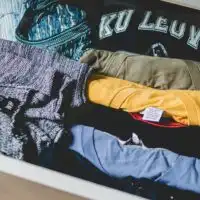Let’s be honest—if you’re trying to juggle fitness with a busy life, you can’t just grab any old bag. A fitness backpack is built to haul gym essentials, workout gear, and whatever else you need, all while staying practical and comfortable. It’s honestly a game-changer for anyone who wants to squeeze in workouts without missing a beat elsewhere.

Designers pack these bags with features like shoe compartments, water-resistant fabrics, and ergonomic straps that actually help your back and shoulders. Some even factor in posture and health, pulling from research on the impact of backpacks on ergonomics.
Heading to the gym before work? Squeezing in a session at lunch? A fitness backpack makes it all feel a little less chaotic and a lot more organized.
Key Takeaways
- Fitness backpacks have features that make carrying gym gear way easier.
- Material quality and smart compartments really matter for durability and ease of use.
- Picking the best backpack depends on what you need and how you spend your days.
What Is a Fitness Backpack?
Fitness backpacks are for anyone who needs to lug workout gear and keep it all organized. They come with spots for gym clothes, shoes, water bottles, and other fitness must-haves. That’s what sets them apart from your everyday bag.
Definition and Purpose
A fitness backpack is basically your mobile locker room. Designers add shoe compartments, water bottle pockets, and areas for clean and dirty clothes. The materials are usually lightweight, easy to wipe down, and ready for whatever you throw at them.
The whole point is to help you organize gear and keep sweaty stuff away from your wallet or phone. Some have tiny pockets for keys, headphones, or protein bars. Ventilation panels and moisture-resistant linings help fend off odors and mildew, which is a lifesaver after a tough session.
Difference Between Gym Backpacks and Regular Backpacks
Gym backpacks just do more. Where a regular backpack might have one big pocket, a fitness backpack gives you shoe garages, insulated drink holders, and tons of compartments. You’ll appreciate the difference when you’re not digging through a pile of sweaty clothes for your headphones.
Regular backpacks usually skip things like padded straps and back panels. Gym backpacks add these for comfort, especially if you’re walking or biking. They also use water-resistant or breathable fabrics and focus more on ergonomic design and tough hardware, which you can see in any quality fitness backpack.
Another thing—gym backpacks often have chest or waist straps to help balance the load. That’s a big deal if you’re carrying heavier gear.
Benefits of Carrying a Fitness Backpack
Honestly, a good fitness backpack just makes life easier. You can stash shoes, wet towels, or gym clothes in their own spots, so nothing smells or gets gross. It’s faster to pack and unpack, and you don’t waste time searching for stuff.
Padded straps and breathable back panels make a real difference for your back and shoulders, especially if you’re commuting. Research on backpack fit and function actually shows that a well-fitting bag can help your posture and even your breathing.
Plus, when everything’s in one organized place, you’re just more likely to stick with your workouts. No more excuses about forgetting gear.
Key Features to Look For

Picking out a fitness backpack can be overwhelming, but a few things really matter. The right bag makes training or commuting so much smoother.
Comfort and Ergonomics
Comfort’s non-negotiable. Adjustable, padded shoulder straps help spread out the weight, so you don’t end up sore. Look for straps that actually fit your body—not just generic shapes.
A padded back panel adds support and keeps you cooler by letting air flow. Sternum straps keep the bag from bouncing around, and hip belts help if you’re carrying a lot. Lightweight materials also help—who wants to lug extra weight?
Ergonomic studies show that a good backpack can actually reduce stress on your back and shoulders and boost biomechanical efficiency. That’s not just marketing hype.
Capacity and Ample Storage Space
You need enough room for all your stuff, but not so much that you’re hauling around a suitcase. Most daily-use gym backpacks are about 20 liters, but if you carry a lot, you might want 25–35 liters.
Extra compartments for clean and dirty clothes, shoes, or wet items are super helpful. You can fit towels, toiletries, snacks, and more without everything getting jumbled together. Having places for small things saves you from digging through a black hole of gear.
Backpacks with good organization and suspension handle both heavy and light loads easily. Internal layouts matter more than most people realize, as systematic reviews have shown.
Organization and Compartments
Organization is the secret sauce. Multiple compartments (especially mesh for wet stuff and zippered for valuables) keep everything where you want it.
Shoe sleeves, laptop pockets, water bottle holders, and key clips make a difference. If you’re going straight from the gym to work, a laptop sleeve is a must. Quick-access pockets save you from rummaging around in a rush.
A smart internal layout means you can grab what you need without unpacking the whole bag. It’s a little thing that makes a big impact on your routine.
Durability and Construction
Your bag needs to take a beating. High-denier nylon or polyester, reinforced stitching, and tough zippers all help. Water-resistant or waterproof fabrics protect your stuff if you get caught in the rain.
Check for reinforced bottoms and bar-tack stitching at stress points. Strong buckles and hardware matter too. If you use your bag every day, make sure it’s built for it.
Some studies show that mechanical properties like stiffness and cushioning really affect comfort and durability. That’s something to keep in mind if you’re picky (and you should be).
Specialized Compartments for Fitness Gear
Special compartments are what set fitness backpacks apart. These keep everything separated and organized, which matters when you’re bouncing between home, work, and the gym.
Shoe Compartment
A separate shoe compartment is a must if you don’t want your clean clothes to smell like your sneakers. Usually, you’ll find this at the bottom or side, and it fits most athletic shoes.
Ventilation helps keep things from getting too funky. Mesh or water-resistant linings contain dirt and sweat, and you can get to your shoes fast when you need them.
Some bags let you collapse the shoe section when you’re not using it. Reinforced seams help the compartment hold up over time.
Garment Bag Integration
If you need to keep a shirt or suit looking fresh, garment bag compartments are awesome. They usually fold out or zip open and have a lining to protect your clothes.
Compression straps inside keep everything in place. Some bags use water-repellent linings or expandable sections, which is handy for commuters or anyone who needs to look put-together after a workout. Check out how some bags are proportioned for both work and workouts.
Water Bottle Holders
Honestly, everyone needs a spot for their water bottle. Mesh or elastic side pockets keep bottles upright and easy to grab, usually fitting 16–32 oz sizes.
Some bags even have insulated holders or removable pockets. Drain holes for leaks and tough stitching set the best ones apart. Staying hydrated is easier when your bottle’s always within reach.
Material Quality and Weather Protection

Material choice can make or break a fitness backpack. You want something that stands up to daily use and unpredictable weather. Fabrics need to be tough, but not so heavy that you dread carrying the bag.
High-Quality Materials
High-denier nylon or polyester is the gold standard for resisting scuffs and tears. The denier count (like 600D or 1000D) tells you how thick and strong the fibers are—higher is tougher, but not always heavier.
Ripstop fabrics use a grid pattern to stop tears from spreading. Double or triple stitching at stress points and strong zippers all add to the bag’s lifespan.
Common high-quality materials include:
| Material | Strength | Weight |
|---|---|---|
| 1000D Cordura | High | Moderate |
| Ripstop Nylon | Good | Low |
| Ballistic Nylon | Very High | High |
Back panels and shoulder straps usually have foam padding and mesh for comfort. That little bit of cushioning can make a long walk a lot more bearable.
Spotlight: adidas Backpacks for Fitness
Now, if you’re looking for a brand that consistently nails the balance between style, durability, and function, adidas backpacks deserve a shoutout. They’ve spent years refining their designs, and it shows—these bags aren’t just about the logo.
adidas fitness backpacks often feature ventilated shoe compartments, padded laptop sleeves, and water-resistant materials that actually hold up. The ergonomic straps feel great, and the organization is surprisingly thoughtful. You’ll find plenty of quick-access pockets, and the zippers rarely jam.
One thing I appreciate? The style factor. adidas manages to keep things sporty without being over the top, so you can take your bag from the gym to the office without feeling out of place. Plus, their durability is no joke—I’ve seen some of these bags survive years of daily abuse.
Sure, they’re not the cheapest, but if you want a backpack that works as hard as you do, adidas is definitely worth a look.
Water-Resistant Features
Fitness backpacks often come with a DWR (Durable Water Repellent) coating. This coating makes water bead up and roll right off the fabric, which is pretty handy if you get caught in the rain.
Some bags use water-resistant zippers and storm flaps to protect the spots where water might sneak in. For outdoor trips or travel, you might find a built-in rain cover that wraps the whole pack during downpours.
Backpack designs sometimes feature taped seams, which block leaks at the stitch lines—always a weak spot for water.
You’ll see dual-layer materials or reinforced bottoms on a lot of fitness backpacks. That way, when you set your bag down on wet ground, it stands a better chance of keeping your stuff dry.
Versatility and Everyday Use

Fitness backpacks really shine when you need to juggle a busy routine. They combine roomy space with flexible design, so you can haul everything you need for the day.
The right features let you move from one activity to the next without a hassle. You can keep your gear organized—no more digging for lost socks or tangled headphones.
Transition from Gym to Work
A good backpack lets you carry workout clothes, shoes, and personal items alongside your laptop or work stuff. People love bags with separate compartments to keep sweaty gym gear away from clean clothes or electronics.
Padded laptop sleeves, side bottle pockets, and special pouches for shoes or damp clothes make a huge difference. If you’re always on the go, these backpacks help you breeze from gym to commute to office without stopping to swap bags.
Versatile Backpack Designs
Modern fitness backpacks put comfort and adaptability front and center. You’ll notice ergonomic straps, tough zippers, and water-resistant fabrics that hold up to daily use.
Adjustable compartments, modular storage, and quick-access pockets mean you don’t waste time hunting for essentials. Some of the best everyday carry (EDC) backpacks offer space for books, gym clothes, lunch, and tech, as outlined in practical EDC backpack features.
A smart layout keeps things organized without adding bulk. Lightweight materials and ventilation boost comfort, so you can use the same bag for workouts, classes, or work.
Popular Fitness Backpack Models
Fitness backpacks juggle comfort, durability, organization, and value. Features like padded backs, adjustable straps, and smart storage set them apart from regular backpacks.
Osprey Daylite Plus
The Osprey Daylite Plus keeps things light and comfortable. It has ventilated mesh shoulder straps and a padded back, so you can wear it for long stretches—whether you’re commuting, hitting the gym, or heading out on a short hike.
With a 20-liter capacity, you get space for workout gear, a change of clothes, and maybe a tablet. Inside, there’s a hydration sleeve that doubles as a laptop pocket, which is honestly pretty clever.
External mesh sleeves hold water bottles or snacks within easy reach. The water-resistant fabric helps protect your stuff if you get caught in the rain.
If you tend to pack heavy, the sternum strap and removable hip belt help balance the load.
Nike Brasilia Training Backpack
The Nike Brasilia Training Backpack stands out for its big main compartment and straightforward organization. At 24 liters, it easily fits gym shoes, towels, and training gear.
Padded shoulder straps add comfort, and the water-resistant bottom panel keeps things dry if you set it down somewhere damp. There’s a separate front pocket for valuables or small accessories.
Inside, mesh pockets and organizers keep smaller items from sliding around. Its tough polyester build resists daily wear, and the clean design fits in most gym lockers.
Athletes like its roomy feel, durability, and reasonable price—it’s a solid pick for regular gym sessions.
Adidas Backpacks
It’d be a miss not to mention Adidas when talking about fitness backpacks. Adidas offers a range of models, like the Adidas Defender, that are popular for their practicality and tough build.
They usually include a dedicated shoe compartment, which keeps your sneakers from mixing with clean clothes or tech. Many Adidas bags feature water-resistant bases, breathable mesh panels, and padded straps for comfort on long days.
You’ll find plenty of pockets, sturdy zippers, and a style that works for both gym and everyday use. Some models even have laptop sleeves and organizers, so you don’t have to compromise between fitness and work essentials.
Honestly, if you want a backpack that can handle sweaty gear, books, and maybe your lunch, Adidas is a safe bet. They’re not flashy, but they get the job done—and that’s what counts.
Choosing the Right Fitness Backpack
Choosing a fitness backpack means thinking about your daily needs and how you’ll actually use it. Fit, material, and key features can make hauling your stuff a whole lot easier.
Matching Your Backpack to Your Fitness Needs
If you want efficient workouts, figure out what you’ll carry. Gym goers need space for clothes, shoes, water bottles, and snacks.
Dedicated compartments for wet clothes or shoes keep things tidy and clean. If you spend time outdoors, you might want a hydration sleeve, lots of exterior pockets, or weather-resistant fabric.
Padded straps and ergonomic shapes help spread the weight and cut down on fatigue. It’s worth making sure the bag actually fits you—otherwise, you risk sore shoulders or back pain. Studies show that a good fit supports your body better.
Tips for Long-Term Durability
Durability starts with tough materials. Ripstop nylon, polyester, or reinforced canvas stand up to rough handling and outdoor use.
Double stitching and quality zippers make a difference. Look for:
- Water-resistant coatings or liners
- Reinforced base panels
- Compression straps for heavy loads
Empty your bag after use and give it a gentle wash now and then to keep odors at bay. A sturdy backpack protects your gear from daily wear and tear, which is especially important for students and young gym goers. Educational programs even recommend robust designs for long-term use.
Frequently Asked Questions
Fitness backpacks adapt to all sorts of needs, from separate shoe storage to fitting your work essentials. People care most about good materials, smart compartments, and design that actually works for daily life.
What are the top rated gym bags with dedicated shoe compartments?
Popular picks with shoe storage include the Nike Brasilia Training Backpack and Under Armour Hustle. These bags have ventilated compartments to keep odors and moisture away from the rest of your stuff.
Adidas Defender is another favorite, with a separate shoe area that keeps things organized and clean—perfect for busy training schedules.
Which backpacks are best for both gym and office use?
Convertible gym backpacks with laptop sleeves, water-resistant fabric, and organized pockets are a go-to. Brands like Aer, Lululemon, and Targus have models that look professional but still hold all your gym gear.
Reviews suggest that multi-use bags make life easier for people balancing work and fitness.
What features distinguish a good gym backpack for men?
Men’s gym backpacks usually have bigger compartments, reinforced zippers, and tough fabric for heavier loads. External water bottle holders, accessory attachment points, and padded straps are common.
Expect a well-ventilated shoe compartment and easy-to-clean interiors, too.
How do women’s gym backpacks differ in design and functionality?
Women’s gym backpacks often come in slimmer shapes and lighter weights. Adjustable straps fit a range of body types, and style choices tend to follow current trends.
They usually include sweat-proof linings, dedicated compartments, and small pockets for things like keys or jewelry.
What should one look for when choosing a high-quality gym backpack?
Look for strong stitching, water resistance, and coated zipper pulls. Padded laptop sleeves, lots of compartments, and breathable mesh back panels all add comfort and organization.
Think about how you’ll use the bag. If you carry electronics, you’ll want padding and separate pockets. Heavy gym users might care more about washable materials and space.
Are there any gym backpacks comparable to the features of a Wolfpak or Nike?
Plenty of brands design gym backpacks with features that rival Wolfpak and Nike. You’ll find reinforced compartments, water resistance, and modular organization in bags from Under Armour and Adidas.
Adidas, for example, puts a lot of thought into durability and comfort. Their gym backpacks often include padded straps, ventilated shoe pockets, and water-repellent materials—honestly, I’ve found some Adidas models just as tough and practical as the big names.
Recent reviews on gym bag designs highlight the perks of ergonomic carrying systems. Nike and Wolfpak both focus on dedicated spaces for footwear, and it seems like Adidas is catching up fast.



